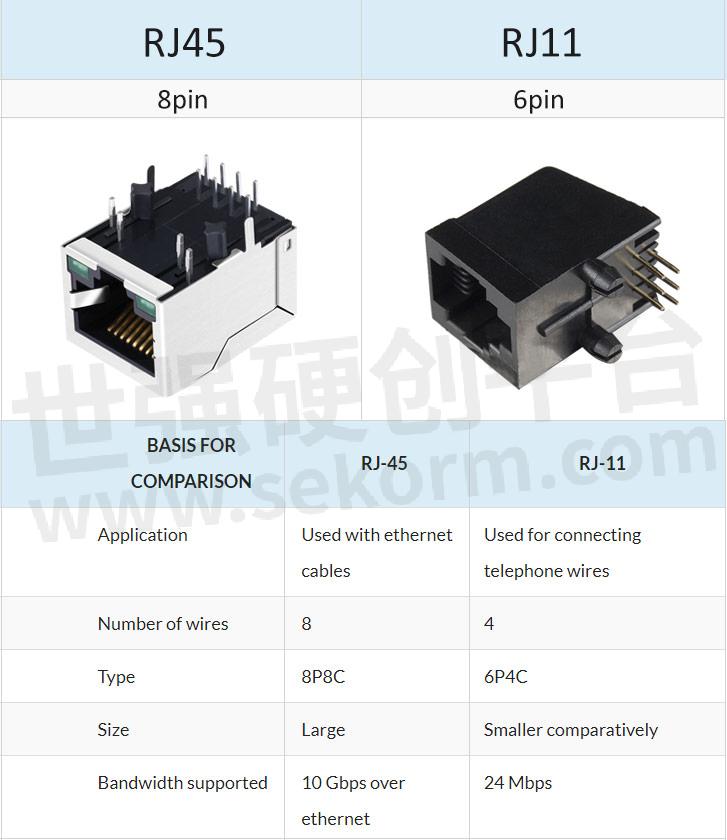RJ11 Vs. RJ45 in Networking Applications

A registered jack (RJ) is a standardized network interface for connecting voice and data telecommunications equipment. Although the specification includes physical construction, wiring, and signal semantics, the terms are often used loosely to refer to the modular connectors. So this comparison focuses on the modular connectors used in RJ11 and RJ45 jacks.
RJ11 is the most widely-used registered jack in telecommunications. RJ11 has a 6P2C or 6P4C configuration, and is used for wiring a single phone line. RJ45 uses an 8P8C configuration. In fact, the RJ45(S) jack — as defined in the standardized spec — is rarely used, but the RJ45 commonly refers to any 8P8C modular connector used in computer networking (Ethernet). It is this meaning of RJ45, the modular connector, that is being compared here. The specification that RJ45 in ethernet adheres to is called the TIA/EIA-568.

- +1 Like
- Add to Favorites
Recommend
- SUPU Modular Inline Spring Loaded PCB Connectors MC-TC Series with Maximum Current Carrying Capacity of 76A
- Comparison of RJ11, RJ14, and RJ25
- METZ CONNECT Has Expanded the Modular System of M12 Circular Connectors
- Brief Analysis of Common Connectors Classification
- Smiths Interconnect Expanded its L Series of Modular Connectors with The Addition of Hybrid & Pneumatic Modules
- The Difference between FFC Connectors and FPC Connectors
- DIN EN 1100 Certified WSMP® Coaxial Connectors, 45% Smaller than Standard SMP Connectors
- “ LINK-PP Lab Upgrade: Advanced Comprehensive Testing Facilities “
This document is provided by Sekorm Platform for VIP exclusive service. The copyright is owned by Sekorm. Without authorization, any medias, websites or individual are not allowed to reprint. When authorizing the reprint, the link of www.sekorm.com must be indicated.
























































































































































































































































































































































































































































































































































































































































































































































































































































































